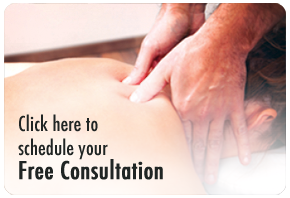There’s a reason why Dr. Jeff Manning of Manning Wellness Clinic is the go-to chiropractic health expert in the Dallas/Fort Worth area. As a knowledgeable professional with more than 15 years of clinical experience, Dr. Manning is known for his ability to talk honestly and openly to his patients; answer questions in a easy-to-understand style; and teach the benefits of chiropractic. Please read below where Dr. Manning talks about that pain in your shoulder that may really be a pain in the neck.
——————————-
SPECIAL FOCUS: BACK AND JOINT HEALTH
By DAPHNE HOWLAND
Special Contributor to the Dallas Morning News
Published: 04 November 2013 04:03 PM
Common complaint
Pain in the neck and shoulder is extremely common because their complex workings are vulnerable to age-related changes, poor posture, lack of exercise and stress.
Degenerative disk disease, an ominous term, happens to everyone starting about age 20. Disks, which cushion the vertebrae, aren’t able to hold as much water, which makes them more delicate, Young says. Meanwhile, tendons in the shoulder’s rotator cuff start changing about age 40.
As those parts lose resilience, stressors like underuse or overuse of muscles and tendons and even emotional stress can cause strain or injury.
 Posture is the problem for most people, says Jeffrey Manning, a chiropractor who owns the Manning Wellness Clinic in Dallas. “People look down at their computer, their phones. So the muscles in the front of the neck will start to become shortened and less flexible, and across the shoulder blades they’ll become stretched, but not in a good way. It’s like trees leaning into the wind.”
Posture is the problem for most people, says Jeffrey Manning, a chiropractor who owns the Manning Wellness Clinic in Dallas. “People look down at their computer, their phones. So the muscles in the front of the neck will start to become shortened and less flexible, and across the shoulder blades they’ll become stretched, but not in a good way. It’s like trees leaning into the wind.”
This begins a cycle that can change joints and bones as they react naturally to the physical demand. “Good stress, like healthy exercise, strengthens bones. But if you stress bones in an imbalanced way, they react in an imbalanced way, and that messes up the mechanical balance of the working joint,” Manning says.
The stress of busy, complicated lives or the emotional toll of bad days or sad life events are often manifested in stiff muscles in the neck and shoulders. Stress hormones worsen the problem, Young says.
“Your muscles get knotted up by very real physical tenseness,” Young says. “But the stress is twofold: Your stress does tend to be carried in the form of shortened muscles in the neck but it also changes the biochemical markers in the body. The same chemicals that are released when you are in stress or in pain are fuel for the pain of muscle tension.”
When to see a doctor
Moen says he wishes he’d gone to a doctor after six months of suffering rather than two years. But Young says to go after more like six weeks.
For one thing, she says, studies show that chronic pain can rewire the brain so that discomfort continues even after the cause is resolved. Plus, many issues can be addressed with conservative measures such as physical therapy, ergonomic changes to the workplace, exercises, modified activity and medication — as long as the problem is accurately diagnosed and caught early.
For stiffness without pain, seeing a doctor may not be necessary. But it’s probably a signal to make changes, these experts say: Be sure you work at a computer with your neck in a neutral position. Exercise regularly; the blood flow helps keep muscles and tendons healthy. Don’t constantly look down at your phone; look up and enjoy the scenery.
“It may start out as a posture issue. Then after six months or a year it becomes a matter of the joints just not working properly anymore,” Manning says. “Your body is such an intricate machine.”



